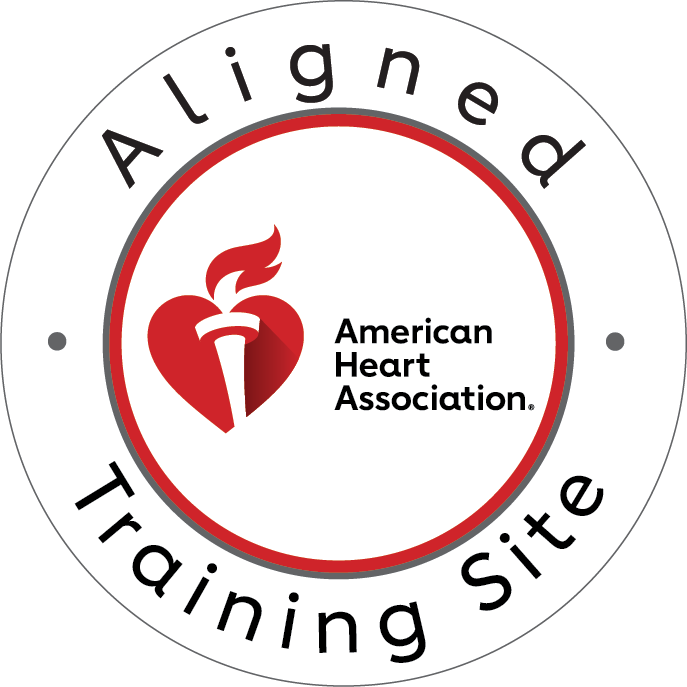I. Introduction
In the fast-paced world of healthcare, being prepared for emergencies is crucial, especially when it comes to our youngest and most vulnerable patients. Pediatric CPR is a vital skill that can mean the difference between life and death for infants and children in crisis. As a healthcare professional in Nashville, mastering this technique is not just a job requirement—it’s a commitment to saving lives.
Pediatric CPR differs significantly from adult CPR, requiring specialized knowledge and techniques. The unique anatomy and physiology of children demand a tailored approach to cardiopulmonary resuscitation. This guide aims to provide Nashville healthcare professionals with a comprehensive overview of pediatric CPR, ensuring you’re well-equipped to handle emergencies involving infants and children.
At CPR Nashville, an American Heart Association (AHA) training site, we understand the importance of high-quality, stress-free education in life-saving techniques. Our hands-on courses, including BLS for Healthcare Providers, ACLS, PALS, and CPR and First Aid, are designed to build confidence and competence in performing pediatric CPR.
In this guide, we’ll explore the nuances of pediatric CPR, from understanding the key differences between age groups to mastering the step-by-step techniques. We’ll also cover common scenarios, special considerations for infants, and how to avoid typical mistakes. By the end of this article, you’ll have a solid foundation for further training and certification in pediatric CPR.
Remember, while this guide provides valuable information, it’s no substitute for hands-on training and certification. CPR Nashville offers the best CPR courses in the area, ensuring you’re fully prepared to handle pediatric emergencies with skill and confidence.
II. Understanding Pediatric CPR
Pediatric CPR is a specialized form of cardiopulmonary resuscitation tailored to the unique needs of children. Unlike adult CPR, pediatric techniques account for the smaller size, more flexible chest walls, and different anatomical proportions of young patients. Understanding these differences is crucial for effective resuscitation.
A. Differences between adult and pediatric CPR:
- Compression depth and force
- Hand placement and technique
- Breath volume and delivery method
- Compression-to-ventilation ratios
B. Key age groups:
- Infant (0-12 months)
- Toddler (1-3 years)
- Child (4-puberty)
Each age group requires slight modifications in technique, which we’ll explore in detail later in this guide.
C. Common scenarios requiring pediatric CPR:
- Drowning
- Choking
- Respiratory failure
- Sudden cardiac arrest (less common in children but still possible)
- Trauma-related incidents
Understanding these scenarios helps healthcare providers anticipate and prepare for potential emergencies involving children.
III. Preparing for Pediatric CPR
Proper preparation is crucial for effective pediatric CPR. Quick, decisive action can significantly improve the chances of a positive outcome. Here’s how to prepare:
A. Assessing the scene and ensuring safety:
- Before approaching the child, quickly scan the environment for any potential hazards.
- Ensure your safety first—you can’t help if you become a victim yourself.
- Look for clues about what might have caused the emergency (e.g., choking hazards, water for possible drowning).
B. Checking responsiveness and calling for help:
- Gently tap the child and call out to them. For infants, you may flick the bottom of their feet.
- If there’s no response, immediately call for help or activate the emergency response system.
- In a solo rescuer situation with a child, perform 2 minutes of CPR before calling for help, unless the collapse was witnessed.
- For infants, if the collapse was not witnessed, perform 2 minutes of CPR before calling for help.
C. Positioning the child for CPR:
- Place the child on a firm, flat surface.
- For infants and small children, a table or countertop can work well, allowing you to stand and perform compressions effectively.
- Ensure the child is lying on their back with their head, neck, and torso in a straight line.
- Remove any bulky clothing that might interfere with chest compressions or rescue breaths.
IV. Step-by-Step Pediatric CPR Technique
Now that you’ve prepared the scene and positioned the child, it’s time to begin CPR. The technique follows the C-A-B sequence: Compressions, Airway, and Breathing.
A. Chest compressions:
- Proper hand placement:
- For children: Place the heel of one hand on the lower half of the sternum.
- For infants: Use two fingers just below the nipple line.
- Compression depth and rate:
- Compress at least one-third the depth of the chest (about 2 inches for children, 1.5 inches for infants).
- Maintain a rate of 100-120 compressions per minute.
- Allow complete chest recoil between compressions.
B. Rescue breaths:
- Opening the airway:
- Use the head-tilt chin-lift maneuver to open the airway.
- For suspected neck injuries, use the jaw-thrust technique without tilting the head.
- Mouth-to-mouth or bag-mask ventilation:
- For mouth-to-mouth: Cover the child’s mouth and nose (for infants) or pinch the nose and cover the mouth (for children).
- For bag mask: Ensure a proper seal and squeeze the bag to deliver breaths.
- Each breath should last about 1 second and cause visible chest rise.
C. Compression-to-ventilation ratios:
- For single rescuer: Use a 30:2 ratio (30 compressions followed by 2 breaths).
- For two rescuers: Use a 15:2 ratio for infants and children.
Remember, high-quality CPR with minimal interruptions is key to improving outcomes.
V. Special Considerations for Infants
Performing CPR on infants requires some modifications to the technique used for older children. Here are the key differences:
A. Modified chest compression technique:
- Use two fingers (index and middle) for single rescuer CPR.
- For two-rescuer CPR, use the two-thumb encircling hands technique:
- Place both thumbs side-by-side on the lower third of the sternum.
- Encircle the infant’s chest with your hands, supporting the back.
- Use your thumbs to depress the sternum while squeezing the chest with your fingers.
- Compress at least one-third of the depth of the chest (about 1.5 inches).
- Maintain a rate of 100-120 compressions per minute.
B. Differences in rescue breathing:
- Cover both the mouth and nose with your mouth when giving breaths.
- Use gentler puffs of air, just enough to make the chest visibly rise.
- Be cautious not to overinflate the lungs, as this can cause injury.
VI. Using an AED on Pediatric Patients
Automated External Defibrillators (AEDs) can be used on children of all ages. However, there are some important considerations:
A. When and how to use an AED:
- Use the AED as soon as it’s available, after starting CPR.
- Turn on the AED and follow its voice prompts.
- Ensure the child is on a dry surface and not in contact with any metal.
B. Pediatric pads vs. adult pads:
- Use pediatric pads for children under 8 years old or weighing less than 55 pounds (25 kg).
- If pediatric pads are not available, adult pads can be used. Ensure they don’t touch or overlap.
- For infants, place one pad on the center of the chest and the other on the center of the back.
- For children, place pads in the standard adult positions (upper right chest and lower left side).
VII. Common Mistakes and How to Avoid Them
Being aware of common errors can help you perform more effective pediatric CPR:
A. Inadequate compression depth:
- Mistake: Not compressing deep enough due to fear of hurting the child.
- Solution: Remember, proper depth is crucial. Aim for at least one-third the depth of the chest.
B. Interrupting compressions for too long:
- Mistake: Taking too much time between compression cycles or when giving breaths.
- Solution: Minimize interruptions. Resume compressions immediately after breaths.
C. Improper airway management:
- Mistake: Not opening the airway adequately or overextending the neck.
- Solution: Practice proper head-tilt chin-lift technique. For infants, keep the head in a neutral position.
Conclusion
Mastering pediatric CPR is a critical skill for healthcare professionals in Nashville. This guide has provided you with a comprehensive overview of the techniques, considerations, and best practices for performing CPR on infants and children. However, knowledge alone is not enough. To truly excel in pediatric resuscitation, hands-on practice, and professional certification are essential.
Call to Action
Take the next step in your professional development and enhance your ability to save young lives by enrolling in CPR certification in Nashville. CPR Nashville, an American Heart Association training site, offers the best CPR courses in the area, including PALS Certification in Nashville.
Here’s why you should choose CPR Nashville for your training needs:
- Comprehensive courses: From BLS for Healthcare Providers to ACLS and PALS, we offer a full range of initial certifications and renewals.
- Stress-free learning environment: Our classes are designed to be engaging and low-pressure, allowing you to focus on mastering the skills.
- Hands-on training: Practice real-world scenarios with state-of-the-art equipment under expert guidance.
- American Heart Association certification: Gain a nationally recognized certification that meets or exceeds most employer requirements.
- Flexible scheduling: Choose from a variety of class times to fit your busy schedule.
Don’t wait to upgrade your lifesaving skills. Enroll in a PALS Certification or CPR certification in Nashville today. Whether you’re seeking initial certification or need to renew, CPR Nashville has the perfect course for you.
Remember, in a pediatric emergency, your actions and expertise can make all the difference. Invest in your skills, invest in saving lives.




